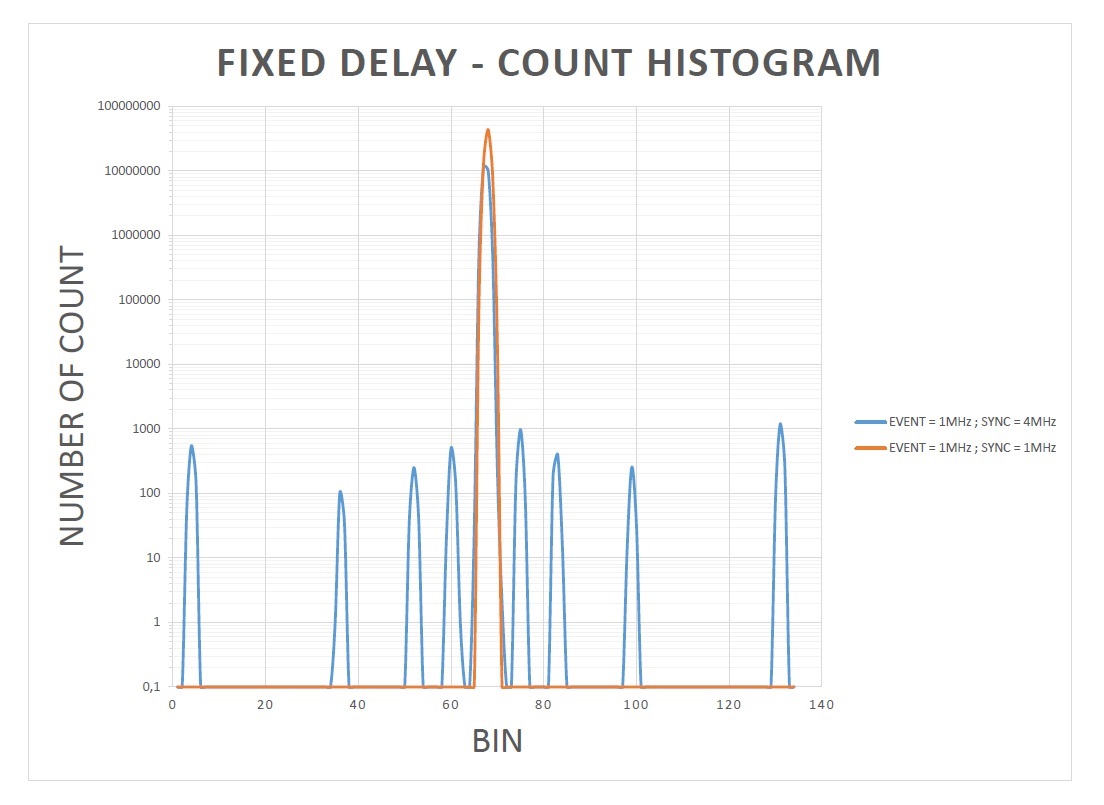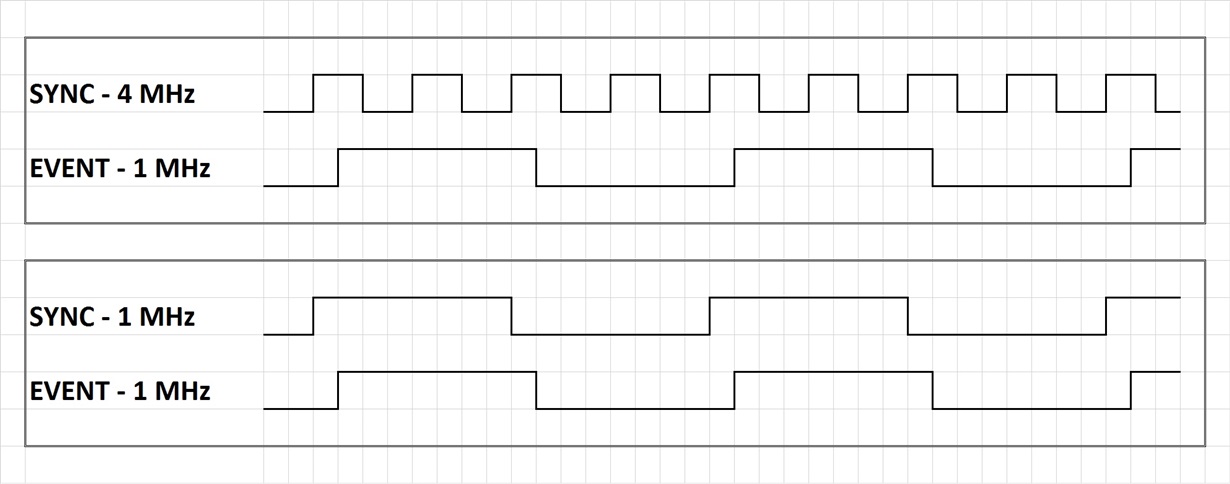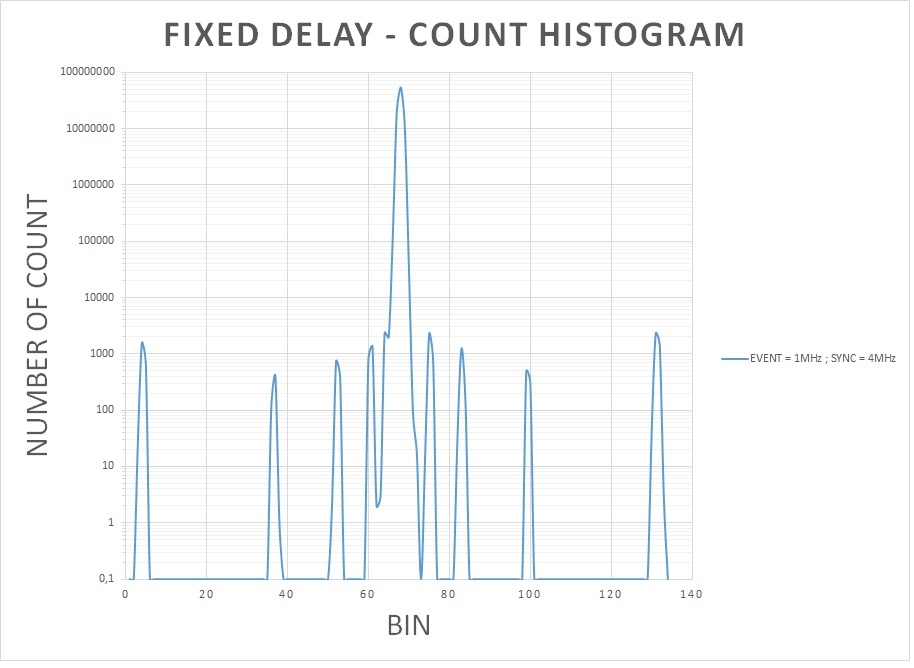Hi,
We have been working on a board for time measurement application for the past two years using your THS788 TMU, and we discovered this week that is was operating in a very weird way when using a higher clock rate for the SYNC input.
Here is the situation :
- We are using it in a SYNC-SYNC-SYNC-EVENT processing way, which means many sync period can have no event pulses.
- The chip runs perfectly using a 1MHz SYNC clock and a 1 MHz EVENT input rate using the oboard pulse generator, with a 8ps sigma as promised.
- When using the exact same event input (1 MHz), but a reference clock at 4 MHz, some quantification error start to occur generating really weird histograms. Some smaller peaks appear at (Main peak + 8/16/32 bins). I have attached a picture of this histogram. I have used a logY axis to show more clearly the problem.
I cannot understand why this happens, and it becomes worst as the frequency of the sync pulse increases.
Since this system is supposed to work at a 80MHz SYNC rate, it is impossible to make this project work without understanding what is happening.
Here are some of the operating specs :
-Data clock rate : 150MHz
-Positive to positive Edge
- 34 bit global counter
- 16 bit results output
- No holdoff - No calibration - No arming conditions
- All power supply are low noise LDO
-All signal are buffer with extremely high rise time
-TDC is cooled with heatsink and fan
I understand that this product is now NRND, but I still need to make that project work... We have a lot of money invested in this and we need to find a way to make the THS788 work.
Please advise...
Jonathan




